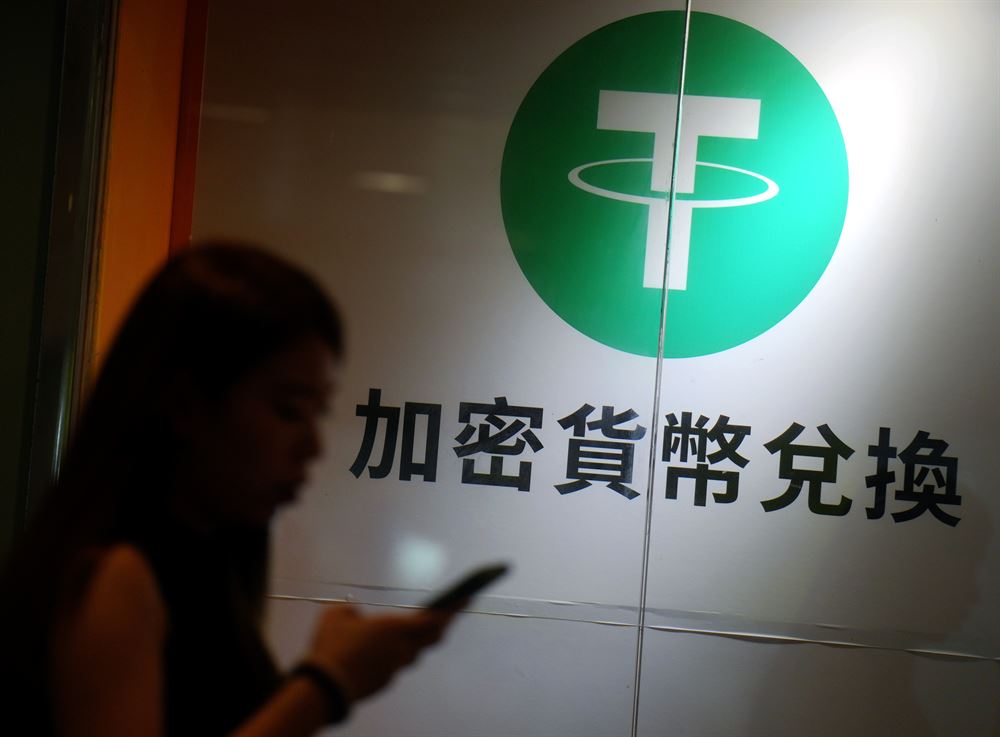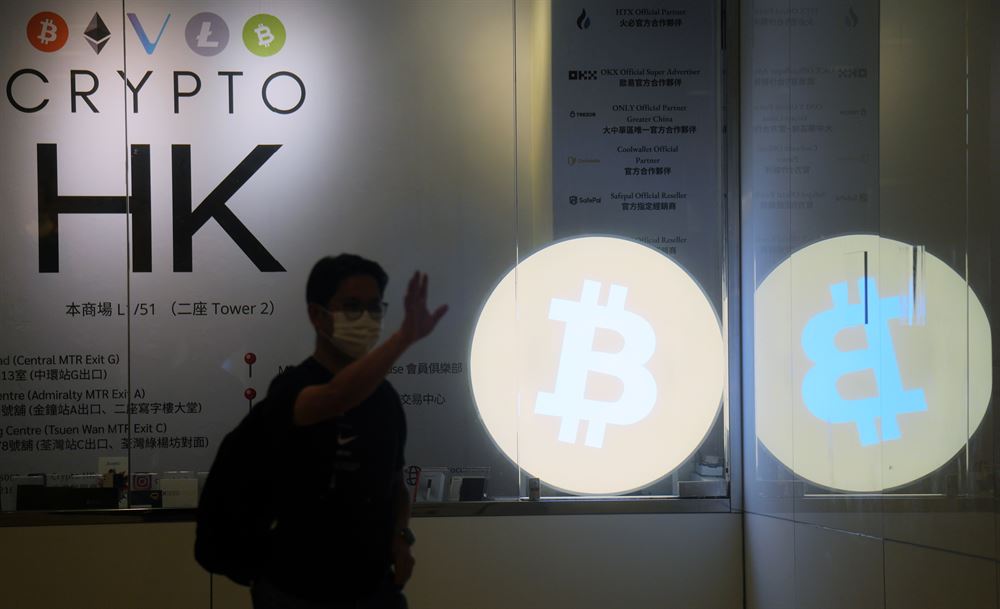
Hong Kong, as one of the world’s busiest trading hubs, is where money changes hands at an astonishing scale, with billions of dollars transacted daily in merchandise trade. But it’s burdened with the same challenges confronting international trade when it comes to making payments — low efficiency, high costs, and lack of transparency.
Satoshi Nakamoto — an enigmatic figure linked to the birth of the cryptocurrency concept — came up with a remedy 17 years ago when he outlined a decentralized, secure, and efficient payment alternative in a paper titled Bitcoin: A Peer-to-Peer Electronic Cash System.
Hailed as the foundation of blockchain, his vision was to revolutionize global payments. But cryptocurrencies based on this technology, such as bitcoin and ethereum, have strayed from its original intent, evolving instead into instruments of investment and, often, speculation.
Analysts say it wasn’t until the stablecoin — a type of cryptocurrency pegged to fiat or other stable assets — appeared that the promise of blockchain in making payments began to be realized.
After developing for more than a decade, the global stablecoin market is entering a new phase of regulatory clarity. Two of the world’s leading financial pivots — the Hong Kong Special Administrative Region and the United States — have made great strides in establishing legal frameworks for stablecoin this year, paving the way for more sustainable, responsible growth and wider application of the blockchain-based asset in real-world scenarios.
Hong Kong’s Stablecoins Ordinance, which comes into effect on Aug 1, treats stablecoin as a payment tool, echoing the approach taken by the US with its passage of the Guiding and Establishing National Innovation for US Stablecoins Act in mid-July.
Both laws aim to create regulatory certainty for stablecoin payment.
Pilot applications
The Stablecoins Ordinance has sparked interest among Hong Kong and international financial and technology firms since legislators gave the green light in May. Among the earliest to jump on the bandwagon are companies that joined the stablecoin issuer sandbox launched by the Hong Kong Monetary Authority in March 2024, including RD InnoTech, a subsidiary of RD Technologies, founded by former HKMA chief executive Norman Chan Tak-lam; Jingdong Coinlink Technology — the payments arm of Chinese mainland e-commerce giant JD; and a consortium led by Standard Chartered Bank (Hong Kong).
These enterprises are vying to secure licenses to operate as regulated stablecoin issuers under the new regulatory framework.
ALSO READ: Hong Kong Monetary Authority sets bar high for stablecoin issuers
Jingdong is reported to be in the second phase of trials in the sandbox after completing its initial technical capabilities assessment. This phase involves inviting internal and external clients to explore use cases, particularly in cross-border payments and cryptocurrency transactions.
If the company gets the nod from regulators to issue stablecoin in Hong Kong, the initial rollout of these digital assets will be used to enhance the efficiency of cross-border settlements within JD’s e-commerce ecosystem, where testing is already underway.
The e-commerce behemoth’s push into stablecoin comes as it accelerates its global expansion in online shopping, warehousing and logistics, which is expected to drive greater demand for cross-border payment solutions.
RD InnoTech is exploring three primary use cases in the sandbox. Rita Liu Yu, CEO of RD Technologies, says the use of stablecoin in cross-border payments is a “catalyst” for its role as a medium in trading volatile cryptocurrencies and facilitating the tokenization of real-world assets, such as properties and equities.
As businesses and individuals increase their stablecoin pool through cross-border settlements or remittances, they’ll naturally use them to purchase yield-generating products like eligible virtual assets or tokenized assets on exchanges, she says.
Liu is bullish about the HKSAR’s potential as a global payment hub, citing its established status as an international financial and trade center with free capital flows.
In the short term, she says the company will anchor its operations in Hong Kong and leverage the city’s networks to serve worldwide users, rather than hastily applying for stablecoin issuer licenses in other jurisdictions.

Game-changing alternative
Merchandise trade volumes through Hong Kong — the world’s seventh-largest trading hub — reached $1.35 trillion last year, on par with those of major economies like France and the United Kingdom. Nearly half of the trade value came from reexports, with an average of over $3.7 billion worth of goods flowing through the city daily en route to international markets.
Behind this trade prosperity lies a persistent problem of cross-border payment inefficiencies, one that isn’t unique to Hong Kong. Worldwide, cross-border payment volumes are expected to exceed $250 trillion by 2027 — a 70 percent increase from a decade ago — according to the Bank of England.
At present, most of the payments rely on the decades-old SWIFT system, which involves a cumbersome process requiring the participation of the remitting bank, the receiving bank, and at least one correspondent bank. For example, when transferring money from China to the US, a Chinese bank uses SWIFT to send payment instructions to a US lender, but the actual transfer is handled by intermediary banks. This fragmented process leads to delays, high costs and limited transparency.
ALSO READ: Chan: Hong Kong to start issuing stablecoin licenses within months
According to Paul McSheaffrey, senior banking partner for Hong Kong at KPMG China, intermediary banks typically charge 50 to 100 basis points per transaction, which means that depending on the number of middlemen involved, fees could reach $2.5 trillion globally by 2027, even with the exclusion of currency conversion costs and interest losses from delayed payments.
These inefficiencies hit individuals as much as businesses. An international student recently posted on social media to complain about having sent 2,400 euros ($2,770) from China to Hungary and incurring a 135 yuan ($18.80) remittance fee and a telecommunications charge of 45 yuan, or 80 basis points collectively, on top of undisclosed fees deducted by the receiving bank.
Against this backdrop, stablecoin is being heralded as a potential alternative to traditional cross-border payment systems, offering solutions to long-standing inefficiencies.
For example, the USDC stablecoin that’s pegged to the US dollar on a 1:1 basis and is the second-largest stablecoin by market share, has established several application scenarios. Its issuer, Circle, is working with remittance provider BCRemit, enabling Filipino migrant workers in places like the US and the UK to send money home at reduced costs and faster settlement times.
Moreover, Circle expanded its reach in April by partnering with African digital payments provider, Onafriq, to integrate USDC-powered settlement solutions into the latter’s network. According to Onafriq, over 80 percent of intra-African payments are traditionally routed through correspondent banks outside the continent and settled in foreign currencies, incurring more than $5 billion annually in transaction fees.
Using stablecoin could cut fees per transaction from tens of dollars to one dollar, and shorten the time from days to minutes, a research report by TF Securities shows.
Looming challenges
Despite its potential, the current global stablecoin market value remains small. JPMorgan strategists led by Teresa Ho said in a recent report that stablecoin accounts for less than 1 percent of global money flows. They expressed skepticism over the market’s ability to grow significantly in the near term, unlike the optimistic projections of US Treasury Secretary Scott Bessent, who told a Senate hearing in June that the stablecoin sector could reach $2 trillion by 2028 — an eightfold increase from its current $250 billion valuation.
Several factors are holding back stablecoin’s adoption, including limited demand in some places, regulatory challenges, and an underdeveloped infrastructure.
Stablecoin’s appeal lies in its ability to deliver fast, low-cost payments. However, structural differences in cross-border payment systems limit its advantages in certain regions, says Miao Yanliang, chief strategist of Research Department at China International Capital Corp, in an interview with China Daily in early July.
In regions like the European Union, the Single Euro Payments Area has created an integrated system for remitting money across borders at minimal cost.
Similarly, payments between the Chinese mainland and Hong Kong are facilitated by initiatives like the newly launched Payment Connect, which allows residents to make near-instant small-value transfers by using only the recipient’s phone or account number.
Miao observes that the demand for stablecoin-based payments is likely to be stronger among businesses with high-frequency cross-border needs, such as e-commerce platforms and multinational corporations, and companies in countries with unstable currencies or weak financial infrastructure.
READ MORE: Standard Chartered, HKT, Animoca to form JV for HKD-backed stablecoin
Moreover, while stablecoin’s decentralized nature is often touted as an advantage, it exerts pressure on regulators. Unlike fiat currencies, whose supply is managed by central banks, stablecoin lacks such a “gatekeeper” to oversee supply or intervene during price volatility, says Hui Kai-lung, acting dean of business and management at the Hong Kong University of Science and Technology.
He notes that once stablecoin enters circulation on a blockchain, transactions occur directly between users’ wallets, bypassing intermediaries, making it almost impossible for regulators to monitor or block suspicious transactions.
This creates a dilemma between growth and security. Stablecoin needs ample liquidity to meet future demand for large-scale trade and international settlements, but increasing supply will exacerbate regulatory challenges and make it harder for authorities to maintain oversight.
Hong Kong has taken a cautious approach to regulating stablecoin adoption. While multiple companies are interested in obtaining licenses, HKMA Chief Executive Eddie Yue Wai-man says only “single-digit” licenses will be issued initially.
Given this measured attitude, an anonymous industry source expects the use of stablecoin in trade payments to start within six to 12 months.
Meanwhile, the infrastructure or eco-system supporting stablecoin use is still in its infancy, and will take time to build, especially for the transformation of traditional financial institutions like banks.
McSheaffrey says that even in the world of stablecoin, banks will remain essential as “trusted intermediaries”, particularly for business-to-business payments, as corporate clients demand high levels of security, compliance and dispute resolution — areas in which banks excel.
To that end, banks are beginning to explore stablecoin-related offerings. In June, JPMorgan launched JPMD — a tokenized representation of US dollar deposits on the public blockchain of cryptocurrency exchange Coinbase. Unlike publicly available stablecoin, JPMD is accessible only to the bank’s institutional clients.
Despite the challenges, stablecoin can play a vital role in future global trade, and Hong Kong’s move to regulate them has opened the door to faster, cheaper cross-border payments.
Contact the writer at irisli@chinadailyhk.com


